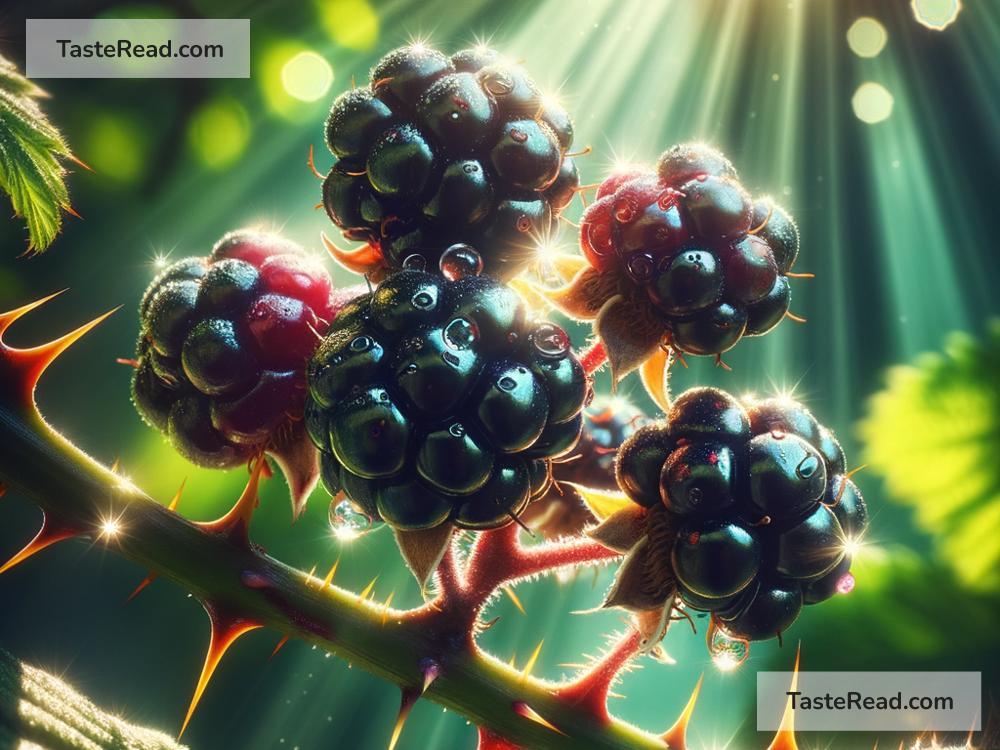Why Blackberries Grow on Thorny Bushes
If you’ve ever gone blackberry picking, you probably know that it’s not always easy. Blackberry bushes, also known as brambles, are full of thorny branches that can scratch your skin or get caught on your clothes. It might make you wonder why these delicious fruits grow on such prickly plants. It turns out, those thorns aren’t just there for decoration—they play an important role in helping the blackberry plant survive and thrive. In this blog post, we’ll dive into the fascinating reasons why blackberries grow on thorny bushes.
Nature’s Defense System
The first and most important reason blackberry bushes have thorns is protection. In nature, plants are always competing for survival. Animals, insects, and even people love tasty blackberries, and they’d happily eat the fruit or even the leaves of the plant. Without some sort of defense system, blackberry bushes could easily get eaten entirely, leaving no chance for the plant to grow or reproduce.
The sharp thorns act like “bodyguards” for the blackberry plant. They protect it from being munched on by grazing animals like deer or rabbits. When these animals approach a blackberry bush, the thorns make it difficult for them to nibble on the leaves or stems. Even adventurous animals like goats, which are known for eating almost anything, might think twice before getting tangled in a thorny bush.
Thorns also help defend the fruit itself. While humans love blackberries and are willing to pick them despite the thorns, many animals won’t take the risk of getting pricked. This means the fruit stays on the bush long enough for it to ripen and for the seeds inside to mature. Once the fruit is eaten—whether by humans, birds, or other creatures—the seeds can spread far and wide, helping the plant grow in new areas.
Climbing and Spreading
Another interesting reason blackberry bushes have thorns is that they help the plant climb and spread. Blackberry plants are usually not strong or sturdy enough to stand upright on their own like a tree. Instead, they grow as trailing or arching vines. The thorns act like hooks, grabbing onto nearby plants, fences, or structures to help the bush stay upright and spread out across the area.
This climbing ability is particularly useful in wild environments. By hooking themselves onto other plants or objects, blackberry bushes can grow taller and reach sunlight more easily. Sunlight is essential for photosynthesis, the process plants use to create energy. With their thorny branches, blackberry bushes can compete for light resources with other vegetation in a crowded forest or field.
Spreading across a wide area also increases a blackberry bush’s chances of survival. When the plant grows larger, it can produce more fruit and seeds. More seeds mean more opportunities for new blackberry plants to grow, which helps ensure the species will continue to thrive.
Natural Selection and Evolution
Over millions of years, blackberry plants have evolved to adapt to their environments and protect themselves from threats. Thorny bushes are an excellent example of natural selection at work. Plants that evolved thorns had a better chance of surviving and reproducing than plants without thorns. This is because the thorns helped them avoid being eaten by animals and allowed them to grow more fruit and spread their seeds.
Over time, the thorny versions of blackberry plants became more common, while the plants without thorns eventually disappeared. This process of adaptation is how many plants and animals develop unique features that help them survive. Today, nearly all wild blackberry bushes have thorns because it’s such an effective survival strategy.
Why Humans Still Love Blackberries
Despite the challenges of dealing with thorny bushes, humans have been enjoying blackberries for thousands of years. They’re sweet, juicy, and packed with nutrients like vitamin C, fiber, and antioxidants. Blackberries can be eaten fresh, baked into pies, blended into smoothies, or turned into jams and jellies. Their versatility and health benefits make them a favorite fruit for many people.
Interestingly, farmers have developed varieties of blackberries that grow on bushes without thorns. These “thornless” blackberries are easier to harvest, which makes them popular for home gardens or commercial farming. However, thornless varieties usually don’t survive as well in the wild because they lack the built-in protection provided by thorns.
Appreciating the Bramble
While thorny blackberry bushes may seem like a hassle, they’re actually an impressive example of nature’s ingenuity. The thorns protect the plant, help it climb and spread, and ensure it has the best chance of survival. Next time you go blackberry picking, you can appreciate the clever ways these plants have adapted over time.
Be sure to wear long sleeves and gloves to protect yourself from scratches, and enjoy the delicious reward these prickly bushes have to offer. Blackberries might be guarded by thorns, but their sweetness makes them entirely worth the effort!


